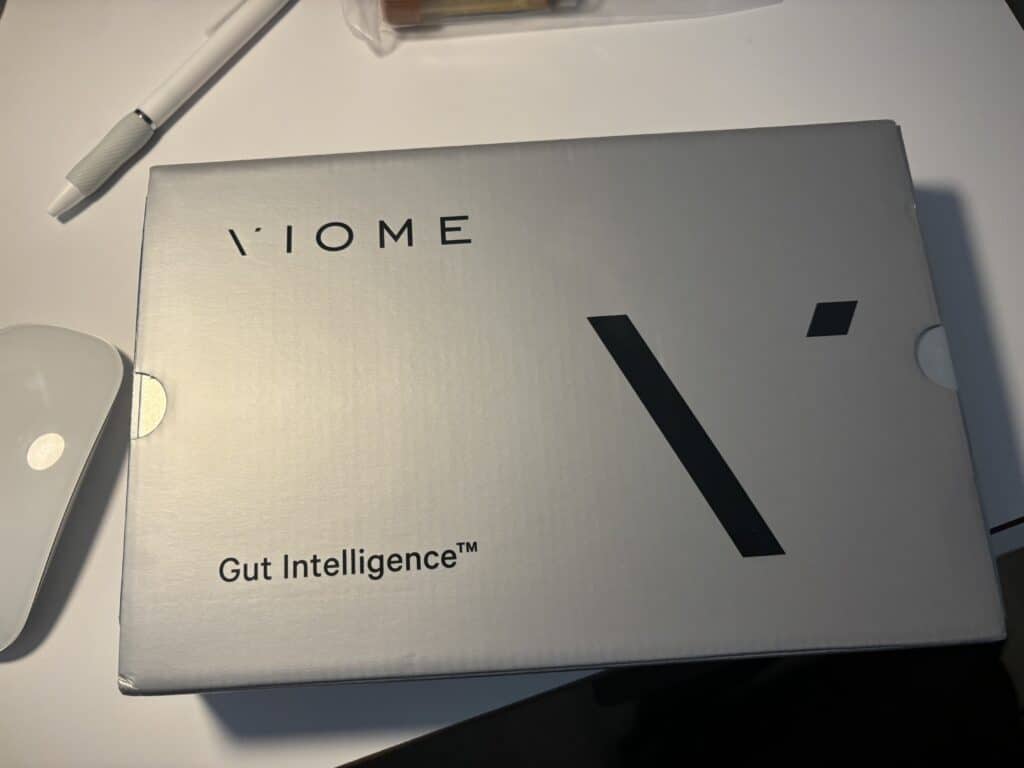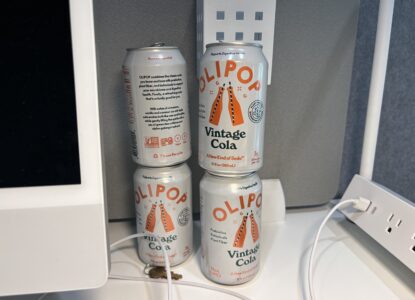The 3 Best At-Home Microbiome Tests

At Gene Food, we offer personalized nutrition and health insights based on genetics.
In previous blogs, we have written about the core differences between DNA and microbiome tests, but today we are focusing just on the at-home microbiome market.
Most at-home microbiome tests look at a stool sample to identify the type and sometimes quantity of microbes in the gut. While there are plenty of tests available, they’re not all as robust as each other. Some offer a basic list of families (genera) of bacteria identified, while others provide strain-level detail and actionable insights.
We look at the types of technologies behind these tests, their benefits and drawbacks, and three of the best at-home microbiome tests on the market.
Note that tests are also available to assess the vaginal, oral, or skin microbiome, but that’s not the focus of this article. For the vaginal microbiome, I’d recommend going with Evvy, which provides metagenomic sequencing for more than 700 bacteria and fungal species.
Types of testing
The bees’ knees of at-home microbiome testing technology is shotgun metagenomic sequencing. This analyzes all the microbial DNA in a sample, identifying down to the individual strain of bacteria, viruses, fungi, parasites, and archaea.
Unfortunately, the vast majority of at-home microbiome tests use targeted DNA sequencing, with a narrow focus on select types of microbes. This has its benefits (it’s fast and cheap) but it isn’t as helpful if you’re trying to figure out an ongoing gut issue or track microbiome health.
For individuals with significant microbiome health problems, other types of tests are available through a clinician. These take the form of:
- PCR – polymerase chain reaction
- Culture
- ELISA – enzyme-linked immunosorbent assay.

Get Started With Personalized Nutrition
Gene Food uses a proprietary algorithm to divide people into one of twenty diet types based on genetics. We score for cholesterol and sterol hyperabsorption, MTHFR status, histamine clearance, carbohydrate tolerance, and more. Where do you fit?
These clinical tools must be ordered by a healthcare provider and can detect or culture microbial strains and offer insight into certain immune or inflammatory markers. These are used to inform a diagnosis or treatment plan and are significantly more robust and costly than at-home tests.
| Technology | Method | What it can find | Pros | Cons |
|---|---|---|---|---|
| Shotgun Metagenomics | Sequences all microbial DNA in a sample | Bacteria, fungi, archaea, parasites, and viruses | Much more specific, with strain-level analysis | Expensive, time consuming, and less widely available |
| Metatranscriptomics | Analyzes RNA to assess actively expressed genes | Active microbial function (which genes are ‘turned on’ in microbes) | Offers excellent insight into function, with near real-time activity and possibility of individual advice | Expensive, complicated to interpret and perform (RNA is less stable than DNA), and not widely available |
| 16S rRNA or ITS Sequencing | Amplifies and sequences the 16S gene present in all bacteria (or ITS in fungal DNA) | Bacterial or fungal families only | Affordable, widely available, and fast | Does not include species or strain details, fungi (unless ITS used), viruses, parasites, or other microbes |
| qPCR/PCR | Amplifies DNA of specific known microbes | Only specific organisms targeted by the test panel | Fast and accurate (good for pathogen detection) | Does not offer an overall microbiome profile (meaning things can be overlooked) |
| Culture-Based Methods | Lab-based culturing of live microbes from the sample | Viable organisms that can be cultured | Can test for antibiotic sensitivity and how microbes react to other drugs and stimuli | Vast majority of microbes cannot be cultured in the lab, meaning most of the microbiome is overlooked |
In short, for a good general overview, at a low cost, and fast, 16S rRNA tests are a solid choice.
For anything more in-depth, or if you have concerns about fungi or viruses, you’ll want to look for a shotgun metagenomics test or metatranscriptomics, or ask your doctor for more advanced testing.
Now we know which technology to look for, let’s look at the best available at-home tests.
Our picks
| Company | Cost | Tech Used | Testing Rigor & Quality | Highlights | Best For |
| Viome | $199-$399, depending on test and sales | RNA sequencing, metatranscriptomics | U.S. labs perform high-tech analysis on microbial composition and activity | Great sample kits and simple process; action able insights and clear reports | Biohackers, gut nerds, longevity chasers |
| ZOE | C$299, plus optional $29-$59 monthly subscription to premium app version | Deep shotgun metagenomic sequencing | Robust technology, reputable researchers, strong focus on nutrition, with tailored guidance | Great app, tailored food advice, optional blood lipid and sugar testing | Personalizing diet based on microbiome (and blood lipids/sugar) |
| Tiny Health | $249 to $600 | Shotgun metagenomics | High-tech analysis to species/strain-level, vaginal microbiome test also available | Actionable reports for infants and adults, with one coaching session included in basic test, supportive customer service. | Adults and infants, anyone wanting more customer support and guidance, folks with Candida |
1. Viome
Our team has personally tested Viome and the product is our top choice for the best at-home microbiome test. This company uses metatranscriptomics and provides comprehensive, actionable reports that are easy to understand. Some of Viome’s test kit also asks for a blood sample (pin-prick test only)

Viome’s benefits include:
- Labs in the U.S.
- Broad scope
- Analyzes microbe presence and activity
- Easy-to-use sample kits
- Easy process with clear and actionable insights
- Faster turnaround than other tests.
Viome currently offers three types of tests. Its Full Body Intelligence Test is the most comprehensive, with a less detailed Gut Intelligence Test also available. Viome’s third test is for the oral microbiome rather than the gut.
For most tests, you can expect results within 2-3 weeks.
Pros and cons
Some users dislike that Viome’s report is basically a long list of Latin names of bacteria strains. There’s no attempt to color code these as being beneficial or ‘bad’.
What Viome does provide, however, is a robust report on the function of these microbes. It includes more than 60 scores, across things like Digestive Efficiency, Cognitive Health, Gut Lining Health, and even biological age. This helps to target areas for improvement, with Viome’s report offering ways to do this, including a tailored list of foods to avoid.
One other downside is that the company strongly pushes its supplements. Every report recommends a tailored supplement regimen that typically costs around $200 each month. Viome even got in trouble with the FDA for its marketing tactics a couple of years ago. If you can ignore the upselling and read between the lines, Viome is a fantastic choice.
My recommendation is to choose Viome and repeat your testing every six months. That way, you can establish your baseline microbiome and track the impact of any dietary or lifestyle changes, instead of trying to compare your personal gut makeup with some non-existent ‘norm’.

Get Started With Personalized Nutrition
Gene Food uses a proprietary algorithm to divide people into one of twenty diet types based on genetics. We score for cholesterol and sterol hyperabsorption, MTHFR status, histamine clearance, carbohydrate tolerance, and more. Where do you fit?
2. Zoe
Zoe takes second place for at-home microbiome tests, thanks to its focus on nutrition. Again, the reports are easy to read and use and the technology is robust.
Zoe’s benefits include:
- Deep shotgun metagenomic sequencing from a reputable company
- Rigorous results and focus on science
- Great for personalized nutrition
- Divides microbes into ‘good’ and ‘bad’ – makes it easier to interpret
- Easy-to-use app.
As well as a stool sample, Zoe’s test kit also asks you to document your meals for a week and requires a pin-prick blood sample, which is used to test your blood lipids. The test kit also includes two types of cookies (one white, one blue), which contain high levels of sugar or fat. These are used to challenge your metabolism and establish a baseline for blood lipids and blood sugar. The blue dye also helps you track digestive transit time.
If you meet certain eligibility criteria for Zoe’s current study, you can also access a free wearable glucose monitor. Zoe asks you to use the monitor for 14 days, to track blood sugar highs and lows.
Pros and cons
While some users like how Zoe provides a report showing your ‘good’ and ‘bad’ microbes, this type of categorization can be problematic. The microbiome is, after all, a balancing act, and things aren’t quite a simple as Zoe makes it seem.
On the plus side, Zoe’s app makes it super simple to track your food intake, see personalized recommendations based on your test results, and to stay motivated to make positive changes.
Zoe also engages in some serious upselling, though, with a paid version of its app and a daily supplement available. This is a bit more subtle than Viome’s marketing though.
If you have a diagnosed gut disease, such as Crohn’s, Zoe may not sell you a kit. This is because the company is focused on health and wellness and is not FDA approved for diagnosis or treatment.
Finally, Zoe states that test results can take around six weeks. Bear this in mind if you’re looking for more immediate answers.
3. Tiny Health
Tiny Health is our third choice and is a good option for families and women, especially if you’re looking to assess your newborn’s microbiome or are concerned about Candida. This test can be bucketed as a great option for kids.
Tiny Health also uses shotgun metagenomics technology and provides rigorous reports that are easy to interpret and use.
Benefits of Tiny Health include:
- Impressive detail on species and strains
- Tailored tests for adults and infants
- Excellent customer service and coaching included
- Actionable reports with nuanced guidance, especially for infants and children.
Pros and cons
Tiny Health is very well packaged and easy to use, and the company’s customer service and care is excellent. Each test comes with at least one coaching session to go over the results and figure out next steps.
The reports also clearly show any red flags for leaky gut, based on levels of specific species or pathogens. Reports also identify the presence of common parasites or bacteria known to cause infection.
For infants, the test collection method is simple and the results are fast and detailed. Parents frequently commend the thought that goes into the reports, with recommendations made with infants in mind.
The downsides to Tiny Health are the longer processing time (3-4 weeks) compared to Viome, and the slightly higher cost compared to Zoe and Viome. That said, you get much more attentive service from the Tiny Health team and have many options to subscribe to additional support after initial testing.

Get Started With Personalized Nutrition
Gene Food uses a proprietary algorithm to divide people into one of twenty diet types based on genetics. We score for cholesterol and sterol hyperabsorption, MTHFR status, histamine clearance, carbohydrate tolerance, and more. Where do you fit?
Budget options
If your budget doesn’t stretch to Viome, Zoe, or Tiny Health, or you’re just looking for a broad overview of your microbiome, Ombre and EasyDNA offer reliable 16S sequencing at a lower cost.



